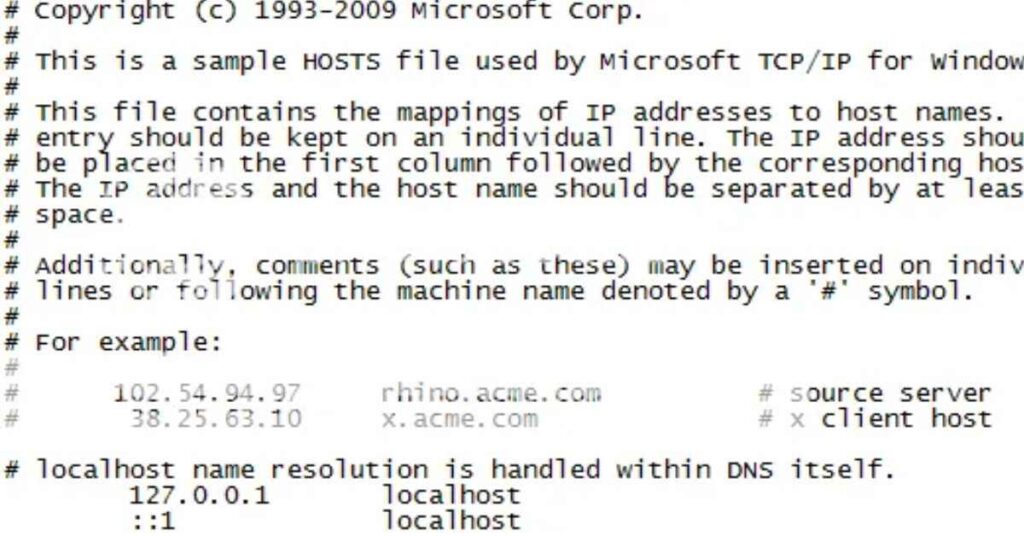In the world of software development, understanding networking and ports is crucial. One specific port that stands out is 127.0.0.1:57573, commonly used for local development. If you have ever encountered this port in your work, you may have wondered how it functions and why it is so vital to the development process.
This guide will dive deep into 127.0.0.1:57573, exploring its role in networking, common issues, and troubleshooting methods. Whether you’re a seasoned developer or just getting started, understanding this port can streamline your workflow and boost your productivity.
Let’s get started by discussing the basics: what exactly is a port, and why does it matter?
Understanding Port 57573
Port 57573 is a special sort of numerical identification that computer makes to transmit or receive information in the local development context. It aids in routing of the network traffic; for example, which application or service deserves the information. This port is useful for the developers since it allows them to test behaviors related to the network without actually engaging other systems.
With the help of Port 57573 one is able to test applications safely on your local machine to avoid surprising with a lot of bugs and errors during its development stage. It helps developers to work effectively and have no problems in live environment. It also ensures that testing security threats are reduced since the process of testing remains local.
Also Read this Blog: Free Web Proxy
What is a Port and Why is it Important?

A port is a logical gateway for data transmission between a computer and the outside world. It’s used to establish communication between various services running on the same or different machines. Port 57573 is just one of over 65,000 possible ports a computer can use to communicate over a network.
Ports act like virtual doors, each one is assigned a unique number that helps direct data packets to the right destination. For example, web traffic typically uses ports 80 or 443, while email services often rely on port 25. So, why should we care about port 57573?
This port is widely used for local development environments, particularly for testing and debugging purposes. By using this specific port, developers can simulate real-world network interactions without exposing their machines to external traffic.
Why Use 127.0.0.1:57573?
Using 127.0.0.1:57573 allows developers to test applications locally on their own machine without relying on external networks. This setup ensures quicker debugging and better control over the environment. It also provides a secure way to simulate network requests safely. By using this port, developers can identify issues early and enhance productivity.
What is 127.0.0.1 and Its Role in Networking?
127.0.0.1 is the loopback IP address, commonly referred to as localhost. When a computer sends data to 127.0.0.1, it is essentially talking to itself. This is useful for testing applications without involving external networks, providing a safe space for development.
Using 127.0.0.1:57573 allows you to test applications on your local machine, ensuring they are functional before deploying them to a live environment. By simulating network requests, you can troubleshoot issues in isolation and avoid security risks associated with external networks.
How Does Localhost Help in Development?

Localhost is also a useful resource for developers because it can establish an environment that is controlled and limited. Rather than being concerned with real world network latency or susceptibility to hack attacks, one can concentrate on fine tuning features, hunting down bugs and improving efficiency.
Suppose you are developing a new web application. This can be achieved through routing of traffic around 127. undefined undefined 1:57573, this way you can consider how the application works in a closed circuit. This way you can always identify the errors and fix them in time and this will help in avoiding bugs from getting into the production stage.
What are Common Causes of Connection Failures?
Like any port, 127.0.0.1:57573 can experience connection failures. Here are some common causes:
- Port Already in Use: If another service is using port 57573, it can block access, causing conflicts.
- Firewall Blockages: Sometimes, firewalls restrict traffic through specific ports for security reasons.
- Configuration Errors: Incorrect network configurations or settings can lead to connection failures on this port.
Understanding these issues helps prevent downtime and ensures a smoother development process.
Port Already in Use
One of the most common issues developers face is port conflicts. If a port is already in use by another process, you won’t be able to bind it to your application. Imagine you’re testing your app, but nothing works because port 57573 is occupied by a different service.
How to Fix:
- Check for Running Services: Use terminal commands like lsof or netstat to find which services are occupying the port.
- Kill Conflicting Processes: If another service is running, terminate it or assign your app a different port.
Firewall Blockages
Firewalls protect your machine from unwanted traffic, but they can sometimes block legitimate requests. If 127.0.0.1:57573 isn’t properly whitelisted, you might experience connection problems.
Solution:
- Whitelist the Port: Adjust your firewall settings to allow traffic through port 57573.
- Check for Updates: Make sure your firewall software is up to date, as outdated rules can sometimes cause issues.
Configuration Errors
Incorrect network configurations can wreak havoc on local development. Whether it’s a misconfigured file or an outdated DNS cache, these errors can stop your app from connecting to 127.0.0.1:57573.
How to Resolve:
- Check Configuration Files: Ensure your app is properly set up to bind to 127.0.0.1 and not an external IP.
- Clear DNS Cache: Refresh the network cache using terminal commands to avoid outdated configurations causing issues.
Types of 127.0.0.1:57573 Errors

Below is a table summarizing the most common errors you might encounter when working with 127.0.0.1:57573 and their potential causes:
| Error Type | Possible Cause | Solution |
| Connection Refused | Port is not open or available | Ensure the port is open or switch to another port. |
| Timeouts | Network delay or firewall block | Check firewall settings or optimize network speed. |
| Bind Failed (Address Already in Use) | Port conflict with another service | Free up the port by stopping conflicting processes. |
Understanding these errors helps streamline the troubleshooting process, enabling you to solve problems quickly.
Advanced Troubleshooting Fixing Tips for Connection Issues on Port 57573
When basic troubleshooting doesn’t solve your connection problems, it’s time to take more advanced steps.
How to Troubleshoot Connection Issues on Port 57573
Here are some advanced tips for resolving port 57573 issues:
Check for Zombie Processes: Sometimes processes don’t terminate properly, leaving the port occupied. Use ps commands to find and kill zombie processes.
Reconfigure Firewall: Adjust firewall rules to allow traffic through port 57573 but only for trusted applications.
Switch to an Alternative Port: If all else fails, consider using another port for your local development. Ensure the new port is properly configured and not in conflict with other services.
Benefits of Using 127.0.0.1:57573 for Development

Using 127.0.0.1:57573 offers many advantages, particularly in web development:
- Isolated Testing Environment: Allows you to test your app locally without exposing it to the internet.
- Faster Debugging: Since all network requests are internal, you don’t have to wait for external servers to respond.
- Enhanced Security: By keeping your development environment isolated, you minimize security risks associated with public exposure.
Tips for Optimizing Local Development Environments
Optimizing your local environment is essential for efficient development. Here are some best practices:
- Use Docker: Containerize your application to simulate real-world environments.
- Automate Tasks: Utilize scripts to automate repetitive tasks, speeding up your workflow.
- Regularly Clear Cache: Free up system resources and avoid outdated files causing issues.
How to Enhance Security on Port 57573
When working with 127.0.0.1:57573, it’s easy to forget about security, but local environments aren’t immune to threats.
Configuring Firewall Settings for 127.0.0.1:57573
Here’s how to secure your local port:
- Limit Access: Ensure only trusted applications can connect to 127.0.0.1:57573 by setting up strict firewall rules.
- Monitor Activity: Regularly check logs to ensure no unauthorized processes are attempting to use the port.
Key Takeaways
- 127.0.0.1:57573 is crucial for local development because it allows isolated testing.
- Common issues include port conflicts, firewall blockages, and configuration errors.
- Advanced troubleshooting involves clearing zombie processes, reconfiguring firewalls, and potentially switching to another port.
- Optimizing your environment with tools like Docker and task automation improves efficiency.
Also Read this Blog: Everything You Should Know About Isaimini.Vip
Final Thought
127.0.0.1:57573 is a key port for local development, allowing developers to test applications on their own machines without needing external networks. This specific port helps create a safe, isolated environment, which is crucial for debugging, testing features, and catching errors early. It also avoids exposing the application to potential security risks, making development both faster and more secure.
Common issues with 127.0.0.1:57573 include port conflicts, firewall blockages, and configuration errors. Troubleshooting involves checking for processes using the port, adjusting firewall settings, or switching to a different port. By using this port efficiently, developers can streamline their workflow and ensure smoother project development.

Welcom to https://birdsaboutinfo.com. Our content is for general information purposes. While we aim for accuracy, use it at your own risk. Seek professional advice for specific concerns. We’re not responsible for external links or the outcome of using our information. Some content may contain affiliate links. We may update this Disclaimer.











